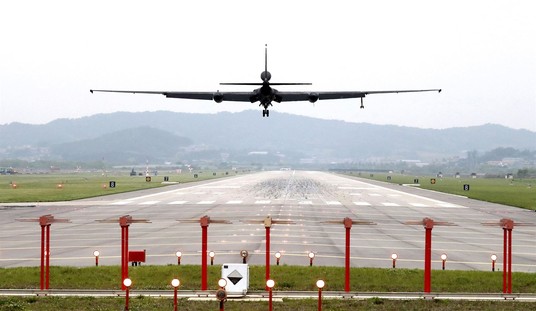Christopher Flavelle at Slate describes the skyrocketing political and economic price of supplying Afghanistan. When it became clear that the US was going to shift the weight of its effort to that landlocked country, the market power of the countries which control the supply routes has increased dramatically. Flavelle describes “the ethical predicament now looming in Central Asia, where Obama may soon need to choose either funding a vicious dictator in Uzbekistan or hindering the mission in Afghanistan. Getting into bed with Uzbekistan could be Obama’s first ugly but necessary foreign-policy compromise.”
Uzbekistan’s human rights record is so odious that even the Bush administration—no pushover for world opinion—cut ties with it four years ago. … The final straw came in May 2005, when Uzbek security forces opened fire on demonstrators in the eastern city of Andijan, killing hundreds of civilians. The U.S. government joined others in publicly condemning the Uzbek regime, and Karimov responded by ordering U.S. troops out of the country. The last U.S. plane left that November, and with it American payments to the Karimov regime ceased, apparently ending one of the darker chapters in the story of America’s war on terror.
At least, until now. Washington is looking at renewing its relationship with a country that seemed untouchable four years ago. This will upset some of Obama’s liberal supporters—as it should. But the new administration may have no choice. Uzbekistan hasn’t changed, but the dynamics of the region have. First and most obvious, there’s a new administration in Washington. During his campaign, Obama promised to increase the number of U.S. troops in Afghanistan.
The logistical consequences of the shift to the “good war” now have to be faced. Amateurs it is said, think of war in terms of tactics, but professionals see it in terms of logistics. Nowhere may this be truer than in the question of supplying Afghanistan. But the logistical burdens occasioned by greater troop strength may be only the beginning of the true requirements of the Southwest Asian theater. The real center of gravity of Taliban/al-Qaeda strength is in Pakistan, which can only be indirectly pressured from its neighbor to the West and only at the cost of feeding the fire in Pakistan itself. It is an absurd situation in conventional military terms. US supplies must pass through the enemy heartland in order to do a 180 degree to turn to fight that same foe. If the true theater of conflict is Pakistan then the US faces a possible escalation of effort in the theater depending on contingent events. In which case the real load will be the requirements of supporting an effort, direct or indirect, within Pakistan. But that’s our supply line. Flavelle continues:
Pakistan, the other main access point for supplies headed to Afghanistan, is a mess compared with 2005. Pervez Musharraf, who resigned as president in August 2008, may have been an unsteady ally, but his successor, Asif Ali Zardari, has been even more critical of U.S. attempts to engage Taliban fighters in Pakistan’s border region. If anything, those fighters are getting more brazen: On the same day that Kyrgyzstan’s president announced plans to close the U.S. base, militants in Pakistan blew up a bridge in the Khyber Pass, a main supply route between Pakistan and Afghanistan. If Obama wants to increase the U.S. military presence in Afghanistan, relying on the Pakistan route seems less and less tenable.
There can be little dispute about the need to prevent Afghanistan from returning to its role as the grand training camp of international Jihadism. But it is fair to ask what Obama’s grand strategy really is and whether it makes sense.
First, is the real center enemy center of gravity in the Middle East, which is the site of the Jihad’s ideology and funding, or is it Southwest Asia? Second, is the tactical center of enemy strength in Afghanistan or in northwest Pakistan and if the latter, does it make sense to tackle northwest Pakistan from Afghanistan across an international border? And if Pakistan is the main theater of operations, what risks of escalation does the US running in implicitly undertaking war on Pakistani territory and are conventional military forces the best way to do this? Third, are there not grave military, economic and political risks inherent in placing large American forces out on a limb while the Taliban and/or other foreign leaders, not all of the best quility, have possession of the saw? If area denial were the only vital US objective in Afghanistan/Western Pakistan, are there not other ways, to achieve this goal?
Today Uzbekistan gets to shake down the USA. Tomorrow, who else?
I don’t know the answers, but I think it is reasonable to ask the questions. These issues are immediately linked to the rate of drawdown in in Iraq; they are linked in the medium term to the “deals” which are being struck all over the region by the Obama administration; and finally they are linked strategically. Are we giving up a certain victory in Iraq in exchange for roll of the dice in Afghanistan/Pakistan?
Open thread.










Join the conversation as a VIP Member